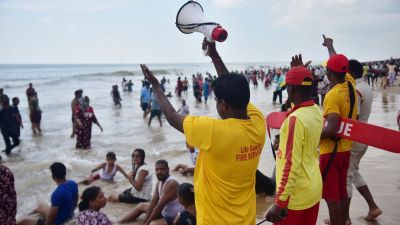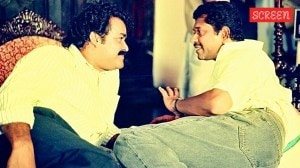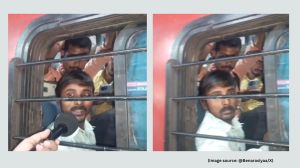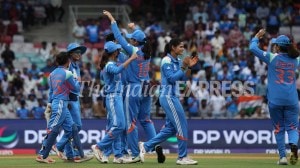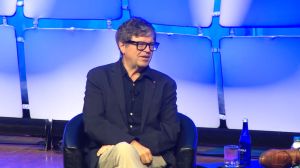Congress foundation day tomorrow, why it is more than a date for party
Formed on Dec 28, 1885, the party's political transformation can be read via its resolutions to mark this day
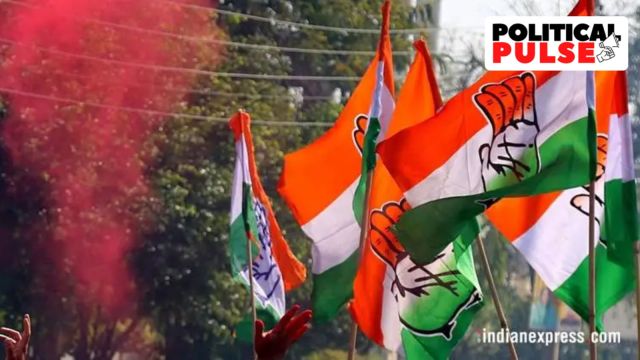 In the Congress's long history since its formation on December 28, 1885, the date and time of the year have often seen major developments. (File)
In the Congress's long history since its formation on December 28, 1885, the date and time of the year have often seen major developments. (File)The Congress has announced the launch of its campaign for next year’s Lok Sabha elections with a mega rally dubbed ‘Hain Tayyar Hum’ to be held in Nagpur on Thursday, the party’s 139th foundation day.
In the Congress’s long history since its formation on December 28, 1885, the date and time of the year have often seen major developments. But, as per the Congress website, it is only the second time that the party will be holding the day in Nagpur, a city identified with both the RSS (for its headquarters being based there) and B R Ambedkar (for being the place where he embraced Buddhism).
Maharashtra Congress chief Nana Patole told reporters Wednesday that whenever the country has been in trouble, the Congress has pitched in. He went on to mention Indira Gandhi’s public meeting in Nagpur after the Emergency, following which the Congress had won all the seats from Vidarbha.
Maharashtra Congress working president Naseem Khan said the Congress slogan ‘Hain Tayyar Hum’ was an exhortation to fight for protecting the country’s democracy – in the same way as the party had fought for the country’s Independence.
A look at the party’s foundation days from formation till after Independence:
Congress is founded; Dec 28, 1885
Seventy-two social reformers, journalists and lawyers congregate for the first Session of the Indian National Congress, held at Gokuldas Tejpal Sanskrit College, Bombay.
Congress expands; Dec 27, 1886
The Second Session of the Congress took place in Kolkata (then Calcutta) under the leadership of Dadabhai Naoroji. With the number of its delegates up to 434, the Congress resolved to set up Provincial Congress Committees across the country.
Sixth Session; Dec 26, 1890
In his presidential address at the Session, held in Calcutta, Pherozeshah Mehta said: “To my mind, a Parsi is a better and a truer Parsi, as a Mohammedan or a Hindu is a better and truer Mohammedan or Hindu, the more he is attached to the land which gave him birth, the more he is bound in brotherly relations and affection to all the children of the soil, the more he recognises the fraternity of all the native communities of the country.”
Indian Councils Act; Dec 28, 1892
At the Session held in Allahabad, the Congress criticised the Indian Councils Act of 1892, which had just been put into operation by the British government. They said that the Act did not allow for Indians to elect their own representatives.
Cong celebrates rise; Dec 27, 1895
At its Eleventh Session, held in Pune, the Congress celebrated the big jump in its delegate numbers from 1,163 in 1894 to 1,584. Party president Surendranath Banerjea said the Congress had brought together “scattered elements of a vast and diversified population”, making them “vibrate with the newborn sentiment of an awakened nationality”.
British slammed for Famine; Dec 28, 1896
Under the leadership of Rahimatulla M Sayani, the Congress at its Calcutta Session passed a resolution blaming the British for the famine that had devastated many parts of India. Condemning the provisions of the existing famine code, the party also attacked the government for blocking private relief.
Tilak’s arrest; Dec 27, 1897
The shadow of Bal Gangadhar Tilak’s arrest on charges of sedition loomed large over the Amravati Session in Maharashtra, with Surendranath Banerjea, known for his oratorical skills, speaking on his behalf. “A nation is in tears,” he said.
‘Drain of Wealth’; Dec 27, 1899
At its Fifteenth Session, held in Lucknow, the Congress demanded that the British government stop the “drain of wealth” from India to England, thus questioning the basis of colonialism. The party president at the time, R C Dutt, along with Dadabhai Naoroji, had been consistently criticising the British for secreting away riches of India to Britain. This ‘drain of wealth’ was also blamed for the frequent famines and growing poverty in India.
Mahatma Gandhi appears; Dec 26, 1901
The Calcutta Session that year was the first time Mahatma Gandhi appeared on the Congress platform. Still a lawyer based in South Africa, he urged the Congress to support the struggle against racial discrimination and exploitation in the country.
Curzon cursed; Dec 26, 1904
At its Bombay Session, the Congress slammed British Viceroy Lord Curzon for using revenues earned from India for the forward policy in Tibet. The Congress also opposed the Curzon administration’s proposal to divide Bengal.
The Benaras rift; Dec 27, 1905
It was at this Session, held in Varanasi, Uttar Pradesh, that divisions between the ‘moderates’ led by Gopal Krishna Gokhale and Surendranath Banerjea and the ‘extremists’ led by Tilak came to the fore. While Tilak and Lala Lajpat Rai wanted the Congress to boycott the visit of the Prince of Wales in protest against the Bengal Partition, the Moderates opposed any such move.
Swaraj as aim; Dec 26, 1906
To counter the increasing influence of the Extremists, the Moderates invited Dadabhai Naoroji, who was based in England, to preside over the session. In somewhat of a triumph for the Extremists, Naoroji declared Swaraj as “the only and chief remedy”. “In self-government lies our hope, strength and greatness,” he said.
Surat Split; Dec 26, 1907
The differences between the two Congress factions came to a boil at the Surat Session. While Extremist leaders like Tilak, Lajpat Rai and Bipin Chandra Pal – dubbed “Lal, Bal, Pal” – pushed for “swaraj or self-rule”, the Moderate faction’s Banerjea and Gokhale called for a softer approach. The Session eventually disintegrated into confusion and had to be suspended.
Jinnah flays separate electorates; Dec 26, 1910
Mohammad Ali Jinnah, then firmly with the Congress, criticised the British plan to introduce separate electorates for Hindus and Muslims in municipalities and local bodies. The 44-year-old barrister stated that this would disturb the amicable relations between the communities. 25 years later, Jinnah would become the main champion of a separate Muslim state.
Gandhi makes waves; Dec 26, 1911
At its Calcutta Session, the Congress took note of Gandhi and the Indian community’s protests in Transvaal, South Africa, seeking the repeal of the province’s anti-Asiatic legislation, and congratulated him.
World War I; Dec 28, 1914
The first World War began, and the Congress, despite differences within, promised all help to the British in the War. The Congress demanded in return that the higher ranks of the army be thrown open to Indians and that military schools and colleges be established in the country.
Closing of ranks; Dec 27, 1915
The biggest achievement of the party’s Session that year, held in Mumbai (then Bombay), were changes in the Congress constitution to admit delegates from the Extremist section. Tilak responded by announcing the willingness of his supporters to re-enter the Congress. As a result, the number of party delegates rose to 2,259 from 866 a year earlier.
Congress-League unity; Dec 26, 1916
The Lucknow Session saw a further closing of ranks within the Congress, now with members of the All India Muslim League. The League also held its session in the same city, Lucknow, that year.
First woman president; Dec 26, 1917
The Congress got its first woman President, Annie Besant, at the Calcutta Session that year. “To see India free, to see her hold up her head among the Nations, to see her sons and daughters respected everywhere, to see her worthy of her mighty past, engaged in building a yet mightier future – is not this worth working for, worth living for and worth dying for?” Besant said in her presidential address.
Amritsar Session; Dec 26, 1919
The Congress held its 34th Session in this city of Punjab, in an expression of solidarity with the people killed in the Jallianwala Bagh massacre there earlier that year. Under the presidentship of Motilal Nehru, the Congress condemned the massacre.
Non-Cooperation Movement; Dec 26, 1920
At its Session, held in Nagpur, the Congress sought to intensify the Non-Cooperation Movement. It urged merchants to boycott any foreign trade relations and urged government servants to help the cause, while stressing on using non-violent means. The party also made important organisational changes, with the AICC strength going up to 350. A Working Committee of 15 members was constituted.
Gandhi’s rise; Dec 27, 1921
Hakim Ajmal Khan was unanimously elected to preside over the Session in the absence of C R Das, who was in jail. Gandhi was appointed as the sole executive authority of the Congress and invested with full powers of the AICC. Chairs and benches for delegates were eliminated and Khadi tents made their appearance for the first time.
Council entry; Dec 26, 1922
At the Session that year, held in Gaya, Bihar, Congress leaders debated the party’s boycott of the government-created councils. While the ‘no-changers’ led by C Rajagopalachari and those loyal suggested to Gandhi that the boycott continue, the Swarajists led by C R Das wanted participation in the councils.
Swaraj or Sarvaraj; Dec 28, 1923
The Session in Kakinada, Andhra Pradesh, was presided over by Maulana Mohammad Ali. “Our Swaraj must be Sarvaraj: the Raj of all… Swaraj must be won by the minimum sacrifice of the maximum number and not by the maximum sacrifice of the minimum number,” the Maulana said during his presidential address.
Gandhi-Nehru-Das pact; Dec 26, 1924
To end the infighting within the Congress, a pact was signed between Gandhi, and Motilal Nehru and C R Das, whereby the Congress accepted that the Swarajists were in the Councils on the Congress’s behalf. In return, the Swarajists agreed that only those who spun Khadi could be members of the Congress.
Sarojini Naidu becomes president; Dec 26, 1925
She became the second woman to preside over the Congress after Annie Besant. “How shall I stir your hearts, how shall I light that flame that cannot die, so that your slavery, so that your disunion, so that all the things that make you hungry and naked and forlorn, oppressed and battered will be burnt in that undying fire?” she said in her presidential address.
Simon Commission; Dec 26, 1927
At that year’s Madras Session, the Congress resolved to boycott the Simon Commission, sent by the British to study the working of the Indian constitution established in 1919, “at each stage and in every form”. In a separate resolution, the Creed of the Congress was defined: “the goal of the Indian people is complete National Independence”.
Dominion Status; Dec 29, 1928
During the Calcutta Session, Gandhi moved a resolution accepting the Motilal Nehru report’s recommendation of Dominion Status within two years. However, Jawaharlal Nehru moved an amendment reiterating the Congress’s commitment to Independence. To arrive at a middle ground, the Congress gave the British a warning that a civil disobedience movement would start if India was not granted Dominion Status by December 31, 1929.
‘Purna Swaraj’; Dec 19, 1929
With Jawaharlal Nehru at the helm, the Congress declared Purna Swaraj (complete independence) as its ultimate goal. “We long for peace and the hand of fellowship will always be stretched, but to all who may care to grasp it. But behind the hand will be a body which will not bend to injustice and a mind that will not surrender on any vital point,” Pandit Nehru said during his presidential address.
First ‘rural’ Session; Dec 27, 1936
Held at Faizpur near Jalgaon in Maharashtra, this was the first Congress Session in a rural area. Pandit Nehru said during his presidential address: “A vaster and more pressing problem is that of the peasantry, for India is essentially a land of the peasants. In recognition of this fact, and to bring the Congress nearer to the peasant masses, we are meeting here today at the village of Faizpur and not, as of old, in some great city.”
Jaipur Session; Dec 18, 1948
The first Congress Session after Independence was held at Jaipur in a highly symbolic move, representing the integration of erstwhile princely states like Jaipur into the Indian Union. The Jaipur Session saw the merger of all the political outfits in various principalities following the Congress’s agenda, with the Congress.
Congress Centenary; Dec 27, 1985
In its 100th year, the party was headed by Rajiv Gandhi, with Indira having been assassinated the previous year. “Let us build an India proud of her Independence; powerful in defence of her freedom; strong, self-reliant in agriculture, industry and front-rank technology; united by bonds transcending barriers of caste, creed and region; liberated from the bondage of poverty and of social and economic inequality,” he said in his speech.






- 01
- 02
- 03
- 04
- 05


